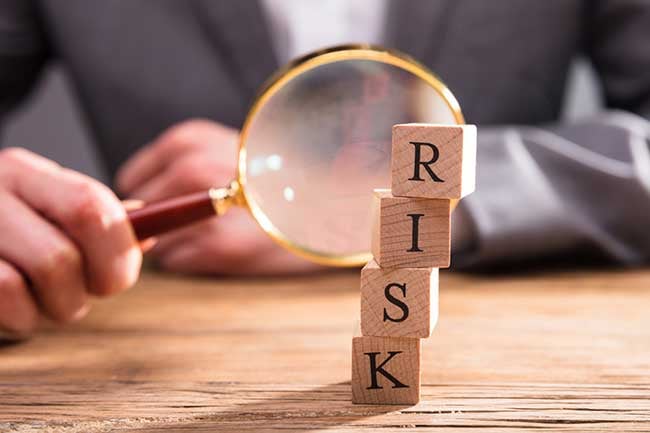
When you sit down to figure out your investment strategy, the issues you might examine are financial goals, what type of return you might want, and what assets are available for acquisition, at a cost that makes some sort of sense. Also important is how much risk you’re willing to accept for a given return to meet your financial goals. It’s a good idea to understand your level of risk tolerance, to ensure that you make the investment decisions that are right for you.
The typical correlation when it comes to risk and return is that, the higher the investment risk, the higher the potential payoff. The opposite is true as well – the greater your investment risk, the more you stand to lose. Risk tolerance can be defined as the amount of material risk you’re willing to take (or how much you are willing to lose), to accept a certain rate of return. Risk tolerance also tells you how you might react to the ups and downs of a given market.
Are you risk-averse or do you have a higher risk tolerance? The best way to answer this question is to understand your risk appetite and risk capacity.
Risk Appetite
Risk appetite is subjective. It involves an honest self-assessment of exactly how much risk you are willing to take on, based on your financial situation and market conditions. If the economy is in a recession and you’re paying college tuition, your risk appetite might be low, with your investment strategy centered around relatively stable investments, such as bonds backed by investment grade credit. Although the returns might be lower, you have the comfort of knowing that you are invested in a financially sound entity, such as the U.S. Government who has a credit rating of AA+ by the S&P. However, if the economy is booming and your children are grown and living from home, your risk appetite might be larger.
Your risk appetite could also be based on previous investment experience. For example, in early 2011, the Bitcoin exchange rate was $1. A few weeks later, it rose to $30, and fell to $2 by the end of the year. In May 2013, Bitcoin’s rate rose above $250, then crashed. If you were a Bitcoin investor in either time period, and either lost or gained a lot of money, that experience might color your wish to be involved with the digital currency again. As New York University Professor David Yermack stated: “Anyone who invests [in bitcoin] should have a large amount of risk tolerance.”1
Risk Capacity
While risk appetite is subjective, risk capacity is a more tangible measurement, as it takes into account net worth, market timing, and how much money you could lose without it impacting your lifestyle. Getting back to the above example, if Bitcoin is trading at $10 or less, and you know that an investment in it won’t impact your ability to pay for groceries, housing or the finer things in life, you might choose to go ahead and buy some. But when priced in the thousands, which we have seen recently, you could end up not wanting to bother, especially if it means dipping into your grocery or clothing fund.
Risky Business?
Sometimes a risk questionnaire can be helpful in identifying risk tolerance and appetite. And, when all is said and done, determining your risk tolerance involves:
- Understanding your investment objectives
- Reflecting on your previous experiences
- Knowing your risk objective and risk appetite
- Talking to a trained investment professional
The experienced professionals at Realized Holdings would be more than happy to help you determine your risk tolerance, and suggest 1031 investments that may best fit your risk profile. For more information, log onto https://www.realized1031.com or call 877.797.1031.
- Brian Lufkin. The wild week of Bitcoin. BBC. December 1, 2017.



